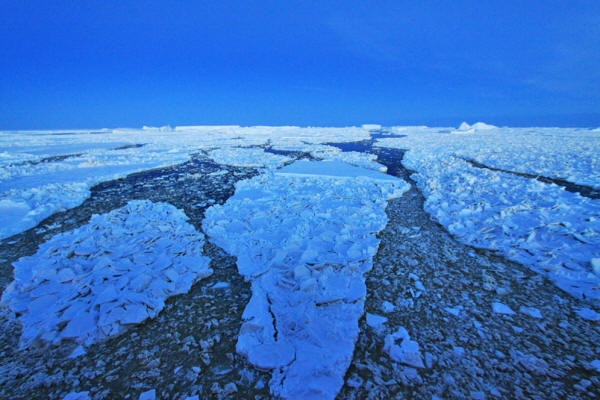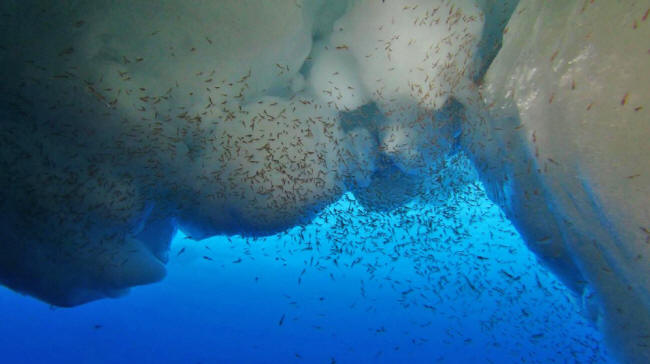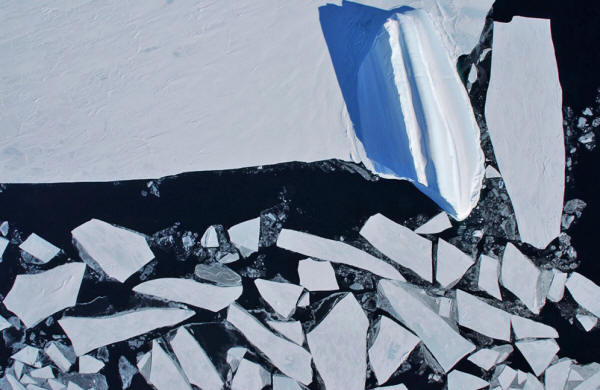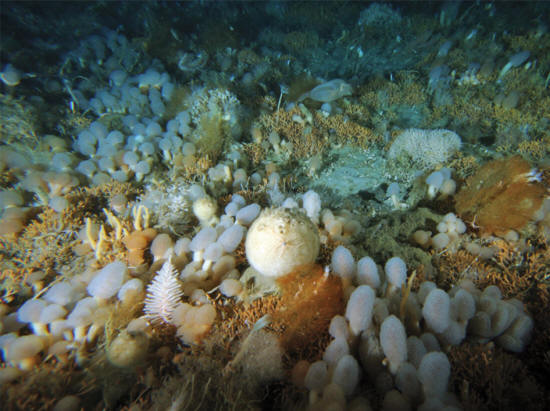|
in the Southern Ocean © Kerry Steinberner Australian Antarctic Division
the world's polar oceans are witnessing
major biological
changes The oceans play a massive role in regulating the planet's overall health.
Tiny organisms that live in the ocean, called phytoplankton or microscopic algae, produce somewhere between 40 and 80 percent of the planet's oxygen (depending on which scientist you ask).
There's a reason, after all, that many people call oceans "the lungs of Earth."
They're also an essential planetary food source and a massive carbon sink. To date, oceans have absorbed about 40 percent of the planet's human-generated carbon dioxide.
That means they regulate
our atmosphere and the concentrations of various gases in our air,
and they transport carbon away from the surface, where it would
otherwise contribute to climate change.
Trying to understand how this all works is an enormous challenge.
Biologist
Jess Melbourne-Thomas, a
research scientist at the
Australian Antarctic Division
and project leader at the Antarctic Climate and Ecosystems
Cooperative Research Centre, is one of the field scientists and
climate modelers attempting to put the pieces of this massive puzzle
together.
The oceans are some of the planet's most complex systems, and they are remarkably difficult to study.
And these interactions are all happening underwater, making them difficult to observe.
That means predicting how the ocean will respond to future climate change is nearly impossible.
But by building computer
models and gathering data based on observations, researchers can see
that changes to the ocean are happening, often more quickly they
anyone had predicted.
The impact of climate change in tropical and warm-water regions are pretty well-known:
Acidification is happening in the polar oceans as well, but the impact is slightly different. While there are some corals in cold water, the biggest impact in the southern oceans will be on anything that builds an exoskeleton.
Skeletons of Antarctic krill, for example, contain calcium carbonate, the same material that's in coral composition.
These tiny shrimp-like creatures exist in the Antarctic oceans in massive numbers; it's estimated there is as much as 500 million tons of krill in the Southern Ocean.
Krill is an essential food source for most the region's animals - seals, whales, birds, fish, and penguins all depend on krill for survival.
And humans have been getting in on this game as well.
compete for food (phytoplankton) during autumn in the Southern Ocean. This competition is thought to drive large variations in the Antarctic krill (Euphausia superba) population. Photo: Ulrich Freir/Alfred-Wegener Institut
Australian Antarctic Division
And if the water's acid content continues to grow in the Antarctic, there is going to be a much bigger burden on krill.
But before the krill start to dissolve completely, researchers are witnessing a more immediate problem.
Animals living in the southern and northern oceans are migrating. As the center of the planet heats more quickly, species that rely on cooler temperatures are traveling farther and farther away from the equator.
That means they're are flocking to the poles, which puts a burden on ecosystems that haven't housed them in the past. But it's also a finite migration.
These species can move farther north or south in search of colder water, but eventually there will be nowhere left for them to run.
The Enduring Importance of Ice
©
Australian Antarctic Division
It's not just polar bears and penguins.
Though sea ice looks flat from above, underneath are craggy, sharp ice peaks that crash into each other and break into pieces.
They create caves that animals can live in, and algae grows along all the underwater surfaces.
The algae or phytoplankton - which produce the planet's oxygen - that live on the ice are at the center of what scientists call the "microbial loop."
They eat each other and they are eaten, all the while absorbing carbon dioxide gases and recycling nutrients in the water, and when they die they take the carbon they've absorbed with them as they sink to the ocean floor.
This means they also protect the planet from carbon that would otherwise contribute to climate change.
©
Australian Antarctic Division
And because of the connectedness of everything - because of the way each individual life on the planet relies on the systems and processes that happens around it - the rapid loss of even one aspect of the system can change the entire ecosystem.
It's a shift that's
happening quickly, and when entire ecosystems shift at a fast rate,
it's very difficult to predict how the life in that system will
react.
Melbourne-Thomas and others are currently working on building predictive models that will tell scientists what the potential outcome of planetary change could look like.
Climate scientists have been making models for a long time, but the biological models are just now starting to be built by plugging in data gathered by a variety of sources:
The key, Melbourne-Thomas says, is to build several models that all utilize different aspects of the data collected and then compare them to each other.
If you're interested in helping scientists better understand how these systems work - and preserving them - there are several active NGOs that work directly with managing marine environments.
Additionally, Melbourne-Thomas is the co-founder of the Homeward Bound project, which brings international teams of women with science and leadership backgrounds to Antarctica every year.
The program's goal is to inform these women on how to use their knowledge and leadership skills to drive change in climate policy around the world.
|





